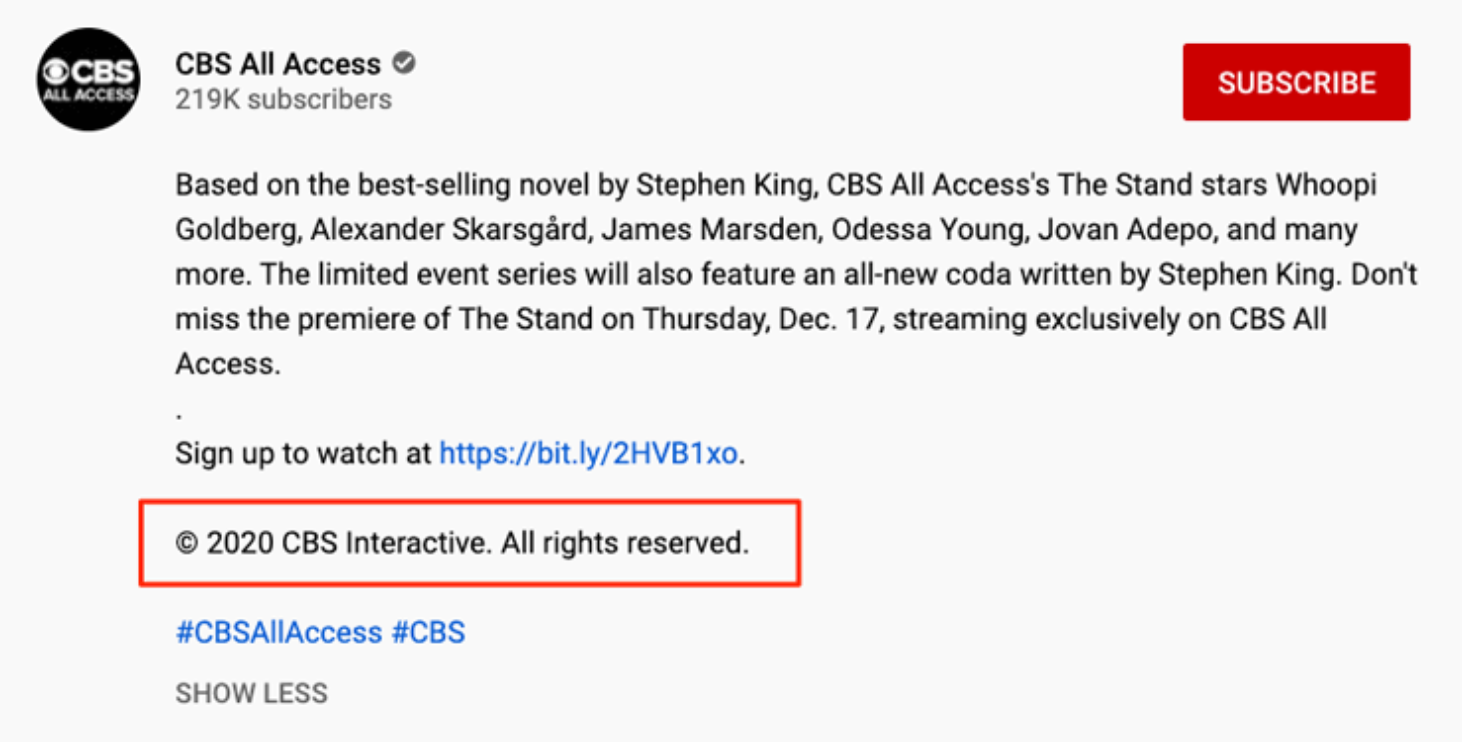YouTube video disclaimers - what you should know?
What is a YouTube disclaimer?
A YouTube disclaimer is a statement placed usually in the video’s description that helps reduce legal liabilities or provide protection for original content.
When do you need a disclaimer on YouTube?
You might need a disclaimer on YouTube, if:
- your provide some advice;
- your video features other people's intellectual property;
- your video features your own copyrighted materials.
Types of YouTube disclaimers
- YouTube copyright disclaimer
- YouTube fair use disclaimer
- YouTube disclaimer for music
- YouTube liability disclaimer
Why you need a YouTube disclaimer?
A YouTube disclaimer can help protect you and your content. YouTube original work copyright disclaimers can discourage others from using your work without permission.
If your video borrows someone’s copyrighted content for fair use purposes, a YouTube fair use disclaimer can help protect you from copyright infringement claims.
A YouTube liability disclaimer can also protect you from lawsuits that may arise from the use of any product, service, or advice you provide in your video.
Examples of YouTube disclaimers
If you have copyright issued for your own content in the video then you can simply write:
“Copyright @ {name and year}. Any reproduction or illegal distribution of the content in any form will result in immediate action against the person concerned.”
In case you are using someone else's content, here is an example of a fair use YouTube disclaimer.
“All the videos, songs, images, and graphics used in the video belong to their respective owners and I or this channel does not claim any right over them.
Copyright Disclaimer under section 107 of the Copyright Act of 1976, allowance is made for “fair use” for purposes such as criticism, comment, news reporting, teaching, scholarship, education and research. Fair use is a use permitted by copyright statute that might otherwise be infringing.”
Or alternatively:
"This channel and I do not claim any right over any of the graphics, images, songs used in this video. All rights reserved to the respective copyright owners."
Be careful with YouTube fair use disclaimer. Ideally, you'd need to get a permit from the rights holder. Copyright disclaimers sometimes can be useless. They can't substitute a permit. And if you got caught by content owners, you would be admitting that you're aware of having violated their copyright, still, you're utterly indifferent to their opinion on the fact you should get permission. Which, ethically speaking, is worse than "accidentally" violating someone's copyright.
Getting permission to use copyrighted materials from the copyright’s owner is the safest way to use someone else’s intellectual property.
Fair use disclaimer
Imagine you are a YouTube blogger and creating a video-review of other YouTube content.
According to the 107th section of the Copyright Act - you can do that on YouTube if you are commenting, criticizing or some other purposes with that video.
Section 107 of the Copyright Act states that copyrighted materials can be fairly used for the following purposes:
- Criticism
- Comment
- Reporting
- Teaching
- Research and scholarship
If you use copyrighted materials for any of the above purposes, you should post a copyright disclaimer or a fair use disclaimer that states that you’re sampling copyrighted works under the protection of Section 107 of the Copyright Act.
Having this disclaimer can help you combat a copyright infringement complaint. So, if you had that included in your video, it can be easier to appeal if there is a copyright strike.
YouTube copyright disclaimer for Music
If you post music online that you own the copyright to, add a music copyright disclaimer to the music’s description or listing.
Music copyrights are unique, because sound recording copyright is designated by the phonogram copyright (℗), while lyrics and composition can still be designated by a standard copyright symbol (©).
If you have music that’s protected by sound recording copyright, standard copyright, or both, add the relevant symbol and copyright date and owner to the music’s listing or description.
Again, it is still best to only use music on YouTube, which has a creative commons license or is copyright free or get a permission from a music creator.
Where to include a YouTube disclaimer?
YouTube description
The most common place to include a YouTube disclaimer is a description of YouTube video.
About page
You can include a general disclaimer in your About page on YouTube channel.
First few seconds of the video
You can include a disclaimer when your video starts. Just create a screen with a legal text.
Your website
Of course, you can also have a dedicated page on your website with a YouTube disclaimer. And the link to this page from YouTube.
Examples of YouTube disclaimers

How to generate a YouTube disclaimer?
There are many website which can help you with creating a YouTube disclaimer - for free or a small fee.
